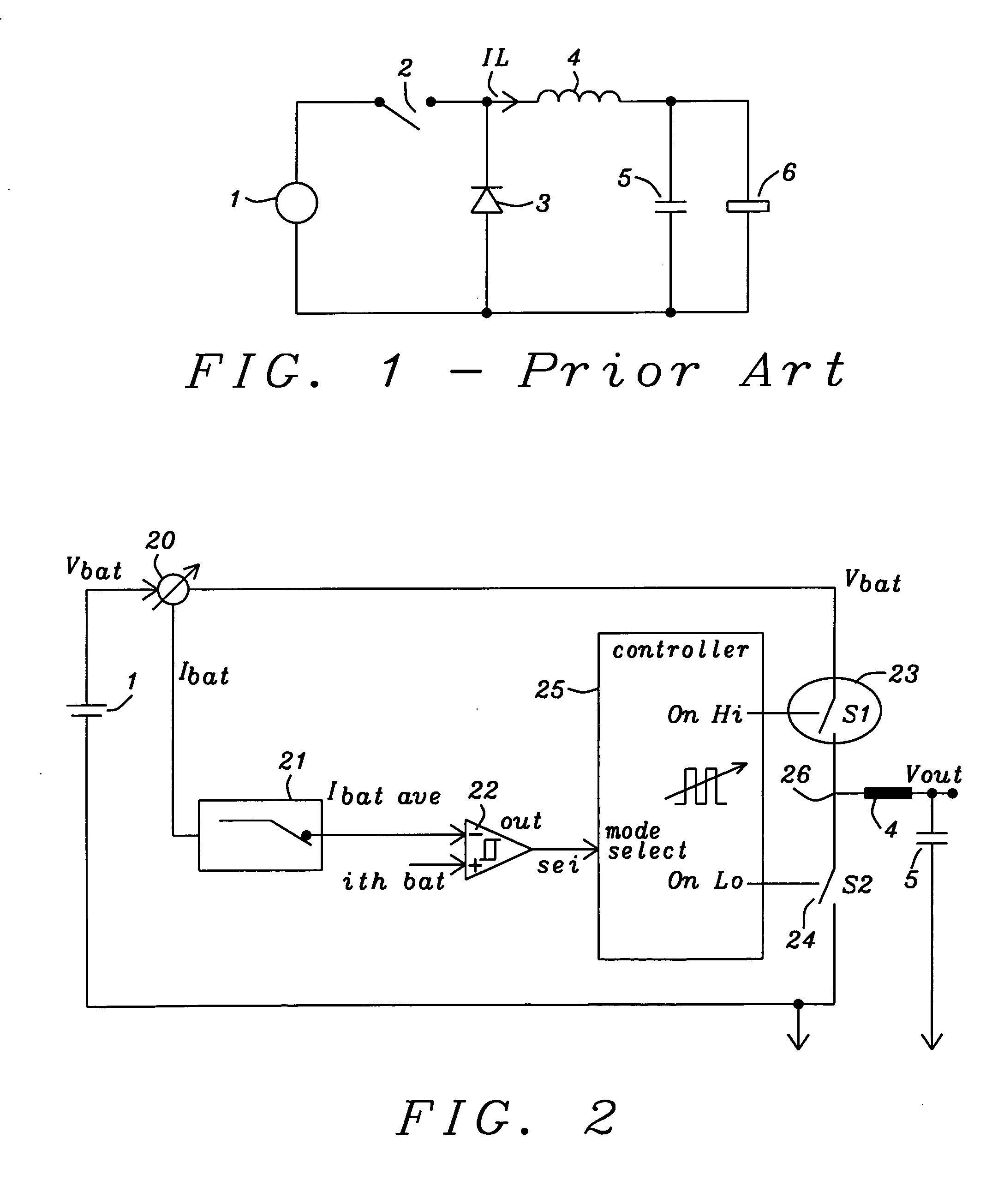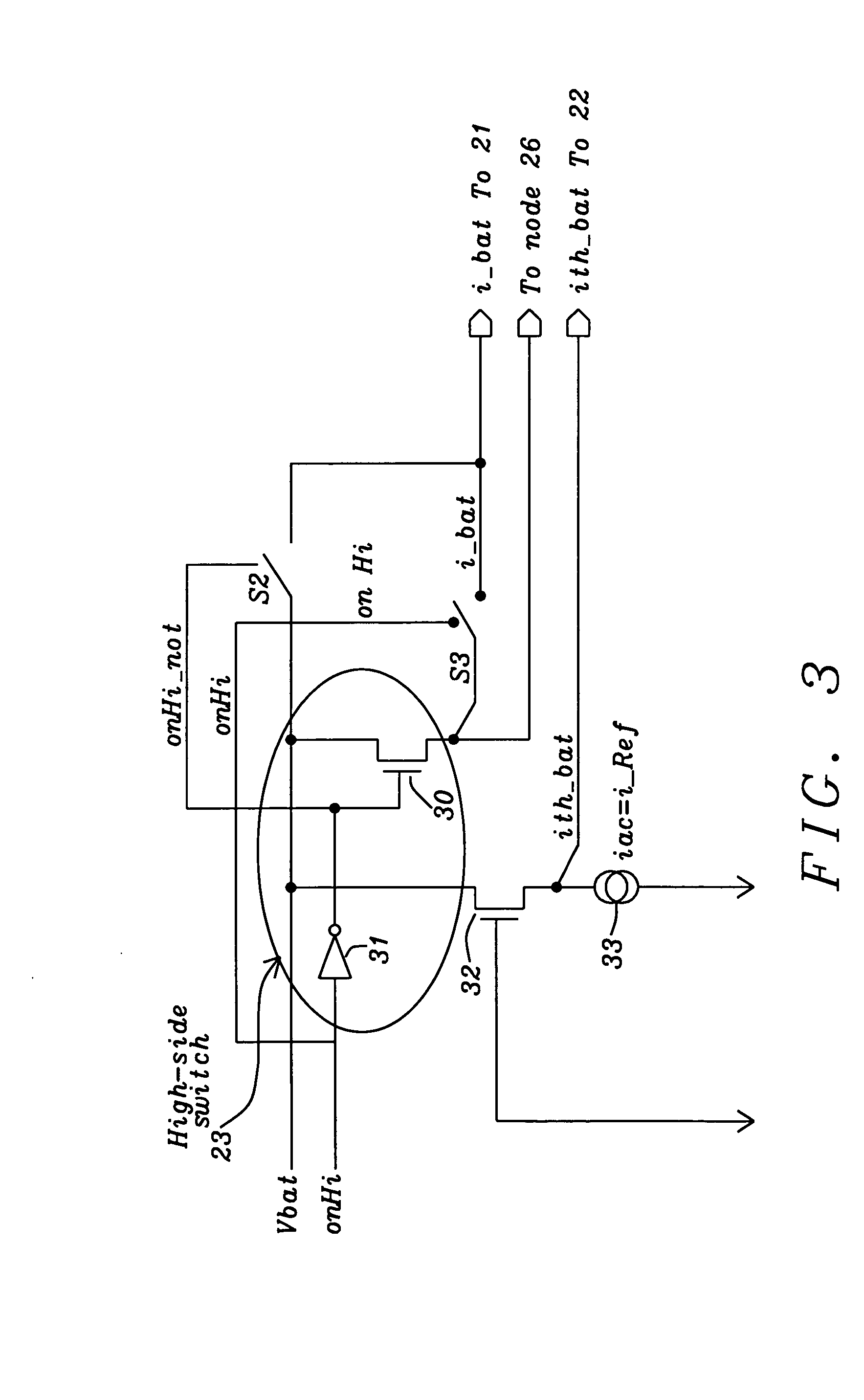Buck converter threshold detection for automatic pulse skipping mode
a threshold detection and automatic pulse skipping technology, applied in the direction of efficient power electronics conversion, electric variable regulation, instruments, etc., to achieve the effect of high selection flexibility
- Summary
- Abstract
- Description
- Claims
- Application Information
AI Technical Summary
Benefits of technology
Problems solved by technology
Method used
Image
Examples
Embodiment Construction
[0030]The preferred embodiments disclose methods and systems to detect a threshold for entering and leaving a discontinuous current mode (DCM) or pulse frequency modulation control mode (PFM) of a buck converter by measuring an average battery current.
[0031]FIG. 2 illustrates a block diagram showing the principal building blocks of the threshold detection invented for automatic DCM mode. The block diagram comprises a battery (obviously or any other DC voltage source) 1 providing a battery voltage Vbat, an inductor 4, usually a coil, and a capacitor 5, being connected between the output voltage Vout and ground. Furthermore the block diagram comprises a high side switch 23 and a low side switch 24, wherein both high side and low side switches are controlled by a controller 25. This controller 25 controls these switches for DCM and CCM mode. The selection of DCM or CCM mode is dependent upon the output of a current comparator 22. This comparator 22 compares a reference current Ithbat w...
PUM
 Login to View More
Login to View More Abstract
Description
Claims
Application Information
 Login to View More
Login to View More - R&D
- Intellectual Property
- Life Sciences
- Materials
- Tech Scout
- Unparalleled Data Quality
- Higher Quality Content
- 60% Fewer Hallucinations
Browse by: Latest US Patents, China's latest patents, Technical Efficacy Thesaurus, Application Domain, Technology Topic, Popular Technical Reports.
© 2025 PatSnap. All rights reserved.Legal|Privacy policy|Modern Slavery Act Transparency Statement|Sitemap|About US| Contact US: help@patsnap.com



